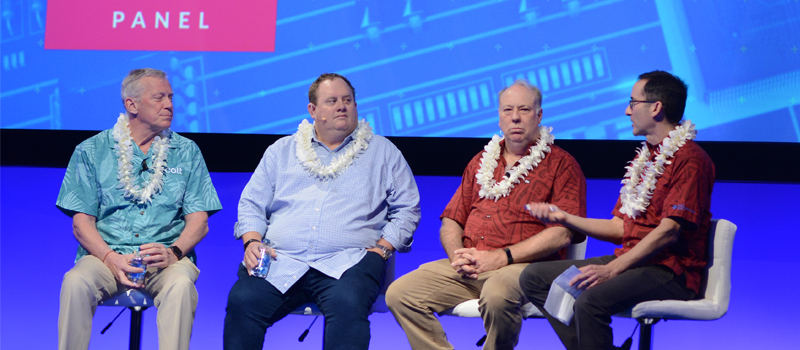 PTC’18 tells us to buckle up for the ride
PTC’18 tells us to buckle up for the ride
We got a memo from PTC’18: global ICT is now at an unprecedented point, perhaps, even a tipping point. Popular metaphors don’t even begin to describe reality anymore, and we are having to invent other descriptions, and sometimes referential quips. It’s a wild ride. It’s so powerful it’s disrupting itself. We are headed to Society 5.0. We’re on the way to Skynet.
The truth is that whatever is happening is now happening nearly exponentially.
Somehow, we didn’t expect this, even though, for 40 years, PTC—the premier forum of its kind in the world—has been telling us that big changes were on the way, even though the agenda in 1978 took place in a telecom world of analogue-switched voice. But the appearance of the exponentiality still, however, has the capacity to astonish.
Exponential growth means more services, more infrastructure, more demand, and more bits to everywhere and from everywhere. It means disruption. It means much more change happens in a given interval. Things are both amplified and compressed at the same time, without floor or ceiling apparent. Timeframes are squeezed, revenues and costs, too, in many cases. Disruption in an exponential environment reshapes players and industries. Many at PTC’18 foresee a significant consolidation of the industry in the near term that will power the remaining players even further.
Regardless, exponential change in such an industry has already rippled out creating a socio-economic impact of tsunami proportions—a perspective that was repeatedly provided at PTC’18 from many thought leaders.
PTC’18 gave plenty of insight on the developments taking place:
- Infrastructure and facilities build at connectivity and data center levels have rapidly increased because of exploding demand and a favourable investment climate.
- Subsea connectivity is cabling everywhere—including the Pacific island nations which astonishingly are within sight of effectively full international connectivity.
- Geopolitics is making itself felt from security assessments of foreign direct investment in a critical industry everywhere to constant pressure for better spectrum usage, and even UN-based oversight on seafloor activities that may impact the subsea telecom industry.
- What happens in a 5G era, and what will it do? 5G is still seen as the glue pulling future societies together, but the question mark remains.
- With several traditional markets disappearing, and new ones yet to appear, the satellite industry is arguably poised to find a new identity in an era of high throughput services.
- Back on the ground, telcos are redefining and rearchitecting themselves at the network level. Some say software-defined WAN technology and network virtualisation represents not only their future but their very survival as major players.
- Meanwhile, OTT players—not traditional telco entities—are continuing to shape the international landscape by building their own networks, effectively bypassing traditional telco structures. In aggregate terms, they are approaching half of the total build activity of the connectivity infrastructure on major routes. Is this an ascendancy? Should it be? Will OTTs ultimately sideline the identity of the telco?
There seems no danger of a let-up. The revolution is incomplete; big gaps remain in both coverage and capability. Vinton Cerf, renowned for his work in developing the TCP/IP protocol foundational to the Internet, suggests there is still a “huge” amount of work to be done, covering better multi-stakeholder involvements, transnational agreements, and a fundamentally people-centered Internet.
Half the global population still does not have Internet access, and coverage apart, he argues: “In today’s Internet, we are lacking safety, security, privacy, reliability, and interoperability.” He says fragmentation, a departure from basic ideas of an open Internet architecture and methodology, is now a distinct risk.
It’s a more forward-looking agenda than the ICT world had in 1978.






